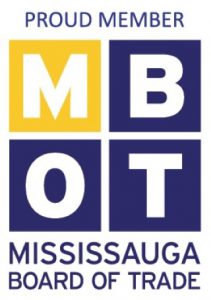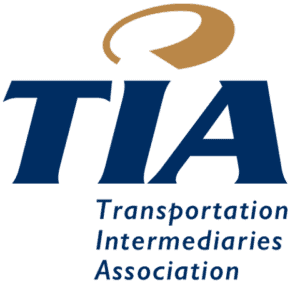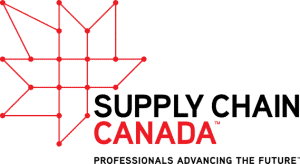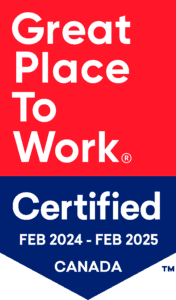The Canadian supply chain context: What you need to know
Transporting and warehousing raw materials and finished goods in Canada has its own set of challenges and opportunities. In this article we offer some quick facts about Canada, outline specific supply chain management problems that Canadian shippers may encounter, and offer some advice on best practices for shipping in the country that shares 5,525 miles of border with the U.S.
Canada
Fast facts
- 2nd largest country in world by land mass
- 10th largest economy in world
- 36.5M people
- 6 time zones
- 85% of population lives within 150 mi of the US border
- 5 major urban centres: Toronto, Vancouver, Montreal, Calgary, Edmonton
- $45-55B in transportation spend, not including value of goods, in 2015
- In 2016, transportation spend grew by 3.1%
- 90% of consumer goods are transported by truck
- 900K Canadians work in supply chain (1.5% of those are truck drivers)
- Interprovincial trade valued at $170B (2016)
- Transportation traffic between US and Canada exceeded $380B (2016)
Canadian shipping challenges
Canada is the second largest country in the world by land mass and our five major urban centres are separated by thousands of miles. The 15 per cent of the population that doesn’t live in these cities is located rurally. The most northerly permanently populated place in the world, located 508 miles from the north pole, is in Canada (Alert, Nunavut). The primary transportation lane to Newfoundland requires ferry service whereas Vancouver Island can only be reached by ferry or plane. Reliance on LTL transportation. Our smaller population, spread over so many thousands of miles, means smaller shipment sizes and greater reliance on LTL transportation. LTL can be expensive and it’s transit times can be unreliable, especially in cross-border scenarios, which can lead to unhappy customers, fines and penalties. Bilingual packaging. Canada’s two official languages (French and English) must be represented on packaging of goods sold in Canada. This means that U.S. manufacturers who are producing goods for the Canadian market may put them at the end of the production run, causing shipment imbalances and instability for the Canadian consumer. The consequence is higher supply chain costs. Regulation. The U.S. has been significantly impacted by electronic logging device (ELD) regulations that came into effect in December 2018. These same rules are scheduled to be in force in Canada as of December 2019. Transportation of hazardous material regulations are slightly different in both countries. In Quebec, there are specific weight restrictions for transport by truck during the spring thaw. The lesson is simple: it’s wise to be familiar with different regulations and how they’re handled in each country. In fact, it’s the law. Transporting goods cross-border. There are a number of regulatory bodies that need to be considered. There is mandatory documentation for customs clearance, which may include a Free Trade certificate and permits. Imports are governed by CBSA (Canada Border Services Agency) into Canada and US CBP (Customs and Border Protection) into the U.S. Depending on the type of goods being transported, the CFIA (Canadian Food Inspection Agency), USDA (United States Department of Agriculture) or FDA (the U.S. Food and Drug Administration) may have a say. Driver shortages. This is a challenge in the U.S. as well, but worth noting that transportation managers can’t escape its consequences north of the border. Driver compensation. Cross-border shipping can involve long waits at the border. Drivers who are compensated by the mile won’t be eager to take on cross-border loads. If your business is building dynamic multi-stop loads into the U.S. from Canada or the other way, it might be wise to rethink paying drivers by the mile.
Canadian shipping best practices
It would be unfair and inaccurate to portray Canada as giving the cold shoulder to anyone who needs to transport raw materials or finished goods. Our experience has shown there are key opportunities for efficiencies that result in significant cost savings and service level improvements. Upgrade your technology. If your transportation management system can’t give you a full view of your supply chain and related costs, both on a day-to-day basis and as a macro view, it’s time to make the investment in a new system. Without a robust and integrated TMS, you won’t have the information you need to eliminate waste from your supply chain. Understand the costs. Once you have the right TMS, you can look carefully at the numbers. It can be painful, but no pain, no gain. Start with base transportation spend, then progress in complexity to examine costs related to accessorials, fuel, prepaid goods and fines and penalties. Use data as a strategic advantage. Start by determining your key performance indicators, setting realistic goals and establishing a baseline. Then track, analyze and review the data at regular intervals to see where you’re doing well and where you need to put more effort. Data should be used as the basis for making decisions if the goal is continuous improvement in supply chain efficiency. Avoid analysis paralysis by being selective in the data you collect and analyze. Make changes to how you ship. Shipment consolidation allows you to combine LTL shipments delivered to the same location into consolidated TL shipments. Collaborative loading (aka co-mingling) involves cooperation between multiple shippers who are sending product to the same region. Both of these strategies will free up resources, such as distribution centres, that can be reduced or reallocated. Stay curious. One of the most common words we say at Cedric Millar Integrated Solutions is “why”? Never be satisfied with the status quo. Question everything. Look for new ideas from the most unlikely people and places. And reward people for sharing their ideas. Choose your partners wisely. When shipping within a jurisdiction you aren’t particularly familiar with, it makes sense to work with subject matter experts who understand market, regulations and players. When that jurisdiction is Canada, it makes sense to work with us!











